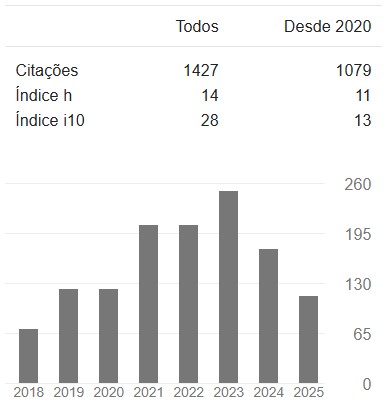Experimental analysis of the resistance of lightweight concrete produced with basalt stone residues
DOI:
https://doi.org/10.17271/2318847286620202738Resumo
The utilization of residues as aggregates for concrete is relevant, as it reduces the extraction of natural resources, for example, natural sand. The study of basalt stone residues for the production of light concretes is embryonic, however, it is an alternative, because the sand is produced from the crushed basalt rock residue, called crushed sand. Expanded clay is traditionally used by several researchers for the production of lightweight concrete. The present research studied the mechanical resistance of lightweight concrete produced with expanded clay with partial replacement of 20% of natural sand by crushed sand, with plasticizer additive. Two traces were prepared, the first Trace 1 of reference (NS100%) and the second Trace 2 with the replacement of 20% of natural sand by crushed sand (CS20%). Compressive strength and tensile strength by diametrical compression were analyzed. The results show that the concrete produced in the research is promising, as it fulfilled the specifications of NBR NM 35, 1995, and the results of compressive strength, at 7 days, were approximately 23.1MPa (T1) and 22.5MPa (T2), values greater than 17MPa, at 28 days, minimum established for structural lightweight concrete in NBR NM 35, 1995. The replacement of 20% of natural sand by crushed sand caused a 9% reduction in tensile strength by diametrical compression and a 10% reduction in compressive strength in relation to the trace (T1) that does not contain crushed sand.Downloads
Os dados de download ainda não estão disponíveis.
Publicado
27-12-2020
Edição
Seção
Artigos Completos
Como Citar
LUCAS, Claudio Nelson Mateus; AZAMBUJA, Maximiliano dos Anjos. Experimental analysis of the resistance of lightweight concrete produced with basalt stone residues. Revista Nacional de Gerenciamento de Cidades, [S. l.], v. 8, n. 66, 2020. DOI: 10.17271/2318847286620202738. Disponível em: https://publicacoes.amigosdanatureza.org.br/index.php/gerenciamento_de_cidades/article/view/2738. Acesso em: 8 dez. 2025.















